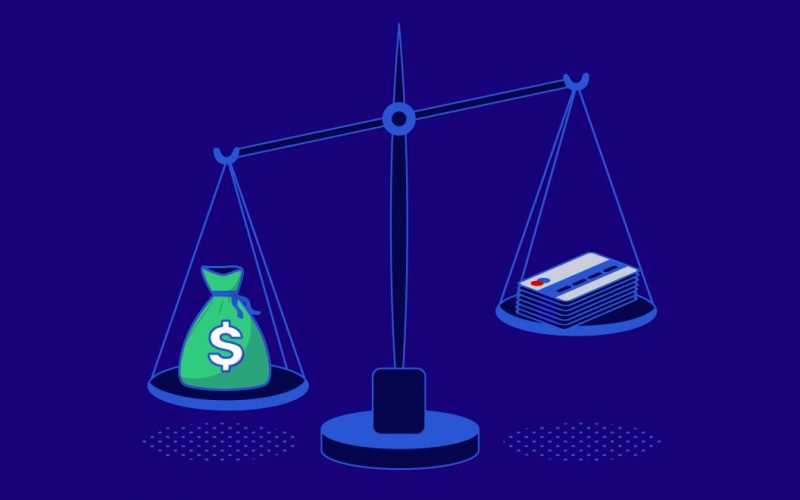The debt ratio as a financial tool evaluates the financial risk of a company. It is usually expressed as a ratio or percentage. Knowing the D of your company determines the extent of your company’s financial debt. It also determines your chances of qualifying for a loan, or a mortgage. We can also calculate debt ratio in relation to income, capital, and equity. In this article, we’ll see how your debt to income ratio affects your qualifications for a mortgage in the UK.
What Is a Debt Ratio?
Debt ratio is a financial ratio that measures the total liabilities of a firm as a percentage of the total assets it has. It shows the proportion of assets the company will sell to pay off its debts. Also, the debt ratio determines the financial leverage of a company. That is to say, a higher ratio indicates that the company has more liabilities than assets. As such, it is considered highly leveraged and more risky for lenders.
How is it Calculated?
We can calculate the debt ratio by dividing the total liabilities of a company by its total assets. The formula is given thus:
D/R = Total Liabilities /Total Assets
It is usually expressed as a percentage or a decimal. Note that in calculating the debt ratio, the total liabilities and assets are included in the calculation. It shows the overall debt burden and not just the current debt.
As explained above, a ratio greater than 1 or 100% indicates that a larger portion of debt is financed by the company assets, and so, the company is likely to incur more debts in the future. A ratio of less than 1 or 100% shows that the company has more assets than liabilities. A ratio of 1 or 100% means that the company has an equal number of assets and liabilities, and as such the business is likely to stop functioning once they pay off their debts.
Generally, each company has its own yardstick for measuring debt, but 0.5 or 50% is the most acceptable percentage. This ratio means that the company has twice as much assets as liabilities, thus, the creditors own only half of their assets.
In some cases, however, a lower debt ratio is required to ensure that the company will be entirely free of debt. For instance, a company with volatile cash flows will need a lower ratio, compared to the ones with more stable cash flows.
Debt to Capital Ratio
This is another financial ratio that determines a company’s financial leverage. It measures the total liabilities of a company in relation to its total capital. So to say, it indicates the proportion of debt that a company uses to fund its projects as compared with capital. This ratio helps business owners understand the ability of their business to handle a potential decline in sales revenue.
How is it Calculated?
To calculate the debt to capital ratio, we divide the total interest-bearing debt of the company by its total capital. The total capital is the sum of the company’s total interest-bearing debt and shareholders’ equity. The total debt includes the company’s short and long term liabilities, while the shareholders’ equity includes items like common stock, preferred stock, and minority interest.
The formula is given thus:
D/C ratio = Total Debt / Total Debt + Shareholders’ Equity
Subsequently, there are various online calculators that you can use to measure your debt-to-capital ratio, so you don’t have to go through the rigours of trying to calculate it yourself.
D/C ratios help investors to analyze the financial structure of a company. A high D/C ratio is a risk factor. This implies that the company is funded by debt rather than equity, and is at a risk of forfeiture if the debt is not paid in time.
D/C Ratio vs Debt Ratio
The debt ratio divides total liabilities by total assets. However, debt to capital ratio does not include the total liabilities. Rather, it includes only the interest bearing debts. This is the major distinction between the two, as all other factors are the same.
Debt-to-equity Ratio
The debt-to-equity ratio, also known as D/E ratio, compares a company’s total liabilities to its shareholder equity. It is a measure of the extent to which a company is financing its projects through debt in relation to the company owned funds. In fact, it shows the ability of the company’s shareholder equity to pay off all debts in case of a business downturn.
How do We Calculate It?
We can calculate the debt-to-equity ratio by dividing the total liabilities of a company by its shareholder equity. The shareholder equity is the total assets a company owns, minus its total liabilities. Consequently, the formula is:
D/E = Total Liabilities/ Total Shareholder Equity
A high D/E ratio often comes with high risk. It simply shows that the company is consistently financing its growth with debt. If this happens, then the company is capable of generating more earnings than it would have without the financing. There are two sides to this; if the amount generated from the leverage is greater than the debt’s costs, then the shareholders can benefit. But, if the cost incurred by the debts is higher than the increased income generated, there will be a downturn of share values.
Debt To Income Ratio
If you want to get a mortgage, especially in the UK, it is important to understand your debt to income ratio. You should also know how lenders use it to determine your credibility for a loan. Mortgage lenders will want to know how much debt you have relative to your gross income. Thus they can determine your ability to afford your monthly payments.
What is the Debt to Income Ratio, and how can it be Calculated?
We can also refer to the debt to income ratio as the DTI ratio. It a measure of your monthly debt payments in relation to your gross monthly income. Your gross monthly income is the income you have before taking out other deductions like taxes. This ratio gives lenders a picture of your liability payments, and they can use it to see if you qualify for their loans.
If you’re applying for a mortgage In the UK, you can calculate your debt to ratio income by adding up your monthly recurring debts. You can then divide them by your monthly income. The formula is put thus:
D/I = Total monthly debts/ monthly income
What does a low DTI ratio imply?
A low DTI ratio indicates a good balance between liabilities and income. For example, if your DTI ratio is 1.5, it means that about 15% of your monthly gross income goes to debt payments. Consequently, there is a great likelihood that you’ll qualify for a mortgage. On the other hand, a high DTI ratio indicates that your chances of qualifying for a mortgage are very slim. This is because you already have too much debt for the income you earn per month.
Typically, lenders give more preference to loan applicants with lower DTI ratios. In general, the highest DTI ratio required for a borrower to qualify for a loan is 0.43 or 43%. However, some lenders prefer a DTI ratio lower than 36%.
What is a Good Debt Ratio?
The preferred range for a debt ratio among investors is between 0.3 and 0.6. Risk-wise, a debt ratio of 0.4 or less is preferable, while a debt ratio of 0.6 or more makes it more challenging to borrow money.
What if Debt Ratio is High?
When a company has a high debt ratio and a high risk level, it has taken on a great deal of risk. Companies with a debt-to-equity ratio of 0.5 or more are often described as “highly leveraged”, which means that most of its assets are financed through debt, not equity.
Can a Debt Ratio Be Negative?
It is possible for a company to have negative shareholder equity if its debt-to-equity ratio is negative. The company has more debt than it does assets. This is typically a warning sign that a company’s financial situation is precarious and could soon worsen to the point of insolvency.
Can Debt Ratio be Greater than 1?
If the ratio is higher than 1, then debt is financing a sizable portion of the company’s assets. Basically, the company’s debts exceed its assets. In addition, if interest rates were to suddenly increase, a high ratio could suggest the company was taking unnecessary risks with its debt.
Why is Debt Ratio Important?
The debt ratio is a key indicator of a company’s reliance on debt for funding. They can also be used to analyze the debtor’s liquidity. Equity investors should pay attention to these ratios because excessive debt levels pose a threat to their investments.
What does a Debt Ratio of 55% Mean?
In the case that debt has funded 55% of your company’s operations, equity will have funded the remaining 45%. If your company has a high debt-to-assets ratio, it may have a hard time getting additional financing, or it may be required to do so at a much higher interest rate.
In Conclusion
The debt ratio is the fundamental ratio that creditors use to determine whether a company is capable of paying off its debts. When companies borrow more money, it affects their debt-to-capital ratios, as well as their debt-to-equity ratios. Companies with higher debt ratios often look to equity financing to grow their operations. Also, mortgage lenders in the UK often use the debt to income ratio analysis to determine an individual’s ability to pay off his mortgage. That is, after settling his incurred debts.
Frequently Asked Questions
What is a good debt ratio?
A ratio of 0.5 or 50% is considered a good debt ratio, as it indicates that the company has twice as much assets as its liabilities. Thus, it can pay off any incurred debts.
How do you calculate the debt ratio?
You can calculate the debt ratio by dividing a company’s total liabilities by its total assets.
Why is debt ratio important?
Debt ratio is important because it determines the ability of a company to qualify for a loan. Creditors want to be sure that the company will still stand in the event of a revenue downturn






